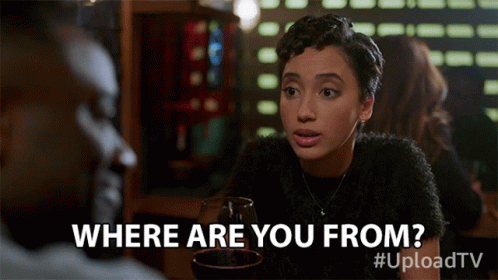My Identity vs. School
“Where are you from?”
“Oh I live in Bayonne, New Jersey”
“No, but where are you really from?”
“Oh! You mean where I was born! I was born in Brooklyn, New York.”
“No no. Where are you really really from?”

This is a question I have heard on many occasions. I am a Muslim Pakistani American. I was born and raised here but ethnically I am from Pakistan, as my parents were brought up there. I wear a hijab (a headscarf Muslim women wear for modesty). People look at me and automatically assume the following things: I only speak Arabic, I have a heavy Arab accent, I am from Egypt, I am new to the United States, and that I am oppressed. Not a single one of these assumptions about me are true. I do not speak Arabic, although I can partially understand one dialect and I do not have an Arab accent either. My parents are from Pakistan, which is relatively far from Egypt and spending my entire life in the United States certainly contradicts the argument that I am new here. And lastly, I am not oppressed because of my religion. If anything, it is my religion that liberates me as it protects me from the influences of the Western culture.
Growing up, I only attended private Islamic schools, except for two years when I went to two different public schools. In my experience in the public school system, I felt very isolated from my other classmates. I was a brown Muslim girl who tried very hard to fit in but the white kids who were popular did not think the same. I was different, I was the new kid. No one knew me, and therefore no one befriended me. My second year in public school, I was going through a very tough time. My grandfather had suddenly passed at the airport and my family was grieving.
However, it seemed that the students felt no empathy. It took me quite some time to understand why. Children can be worse bullies than adults, as they are navigating through their emotions, feelings, and the physical changes happening in their body. The American schooling contains the idea of unity and togetherness but the moment something or someone “new” or “different” is introduced to them, they treat it like a foreign virus that must be avoided. It was in these times that I first felt an identity crisis. I was not “American” enough for the kids at this school and my hijab made me stand out even more as an “outsider”.
In my Islamic schools, the students (for the most part) accepted me for who I was as we all shared a common religion. Meeting with kids in public schools made me realize that I might never be truly accepted for who I am. In America, I am not “American” enough and interestingly enough, in Pakistan, I am not Pakistani enough because I was born here. 
The students in my public schools were not used to seeing those who were different from them. Yes, there were black, Hispanic, and North Asian students but they made up such a small percentage of the school. All of these groups make up the cultural “other”. A few years ago, a school in the United States hosted an “Ethnic Fest” in which various student clubs performed or displayed parts of their culture for everyone to see. Although their intention was to bring awareness to the various cultures that make up their school, it achieved somewhat of the opposite of the goal. This event further proved the idea that white culture is the norm and anything traditional is odd or unnatural. From the formation of the nation, the government leaders wanted to remove traces of culture in order to create a “cultureless culture” which focused on white people. Anything tradition would be considered out of the norm or backwards. The less culture in your practices, the more traditional and future-oriented you are considered to be.
On the bright side, it seems that there are changes in perspective happening as the number of minority students is rising in schools. However, there is still a lot of work to be done in order for students to feel comfortable in their own skin.
Comments
Post a Comment